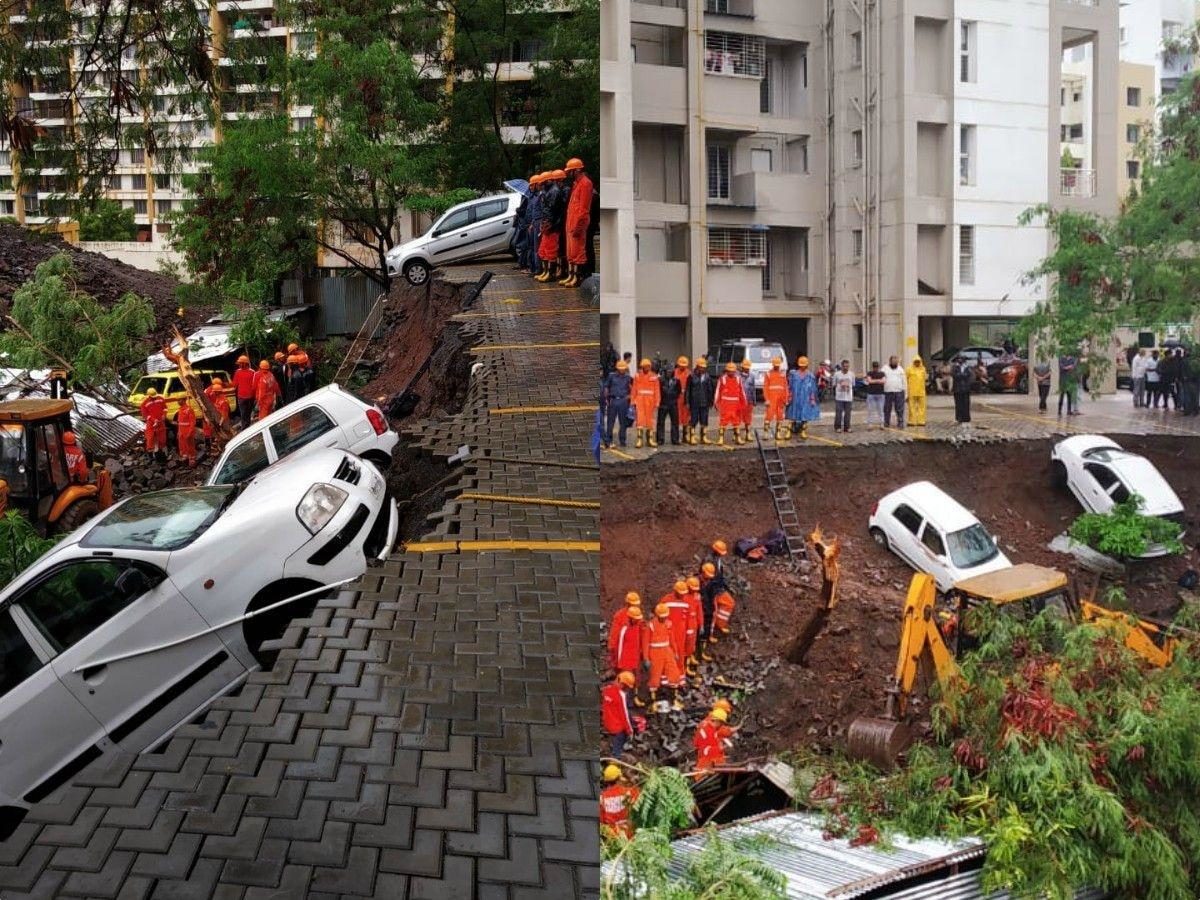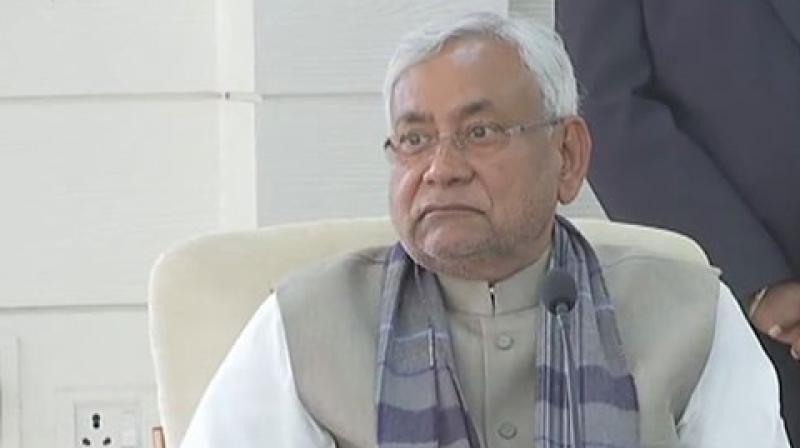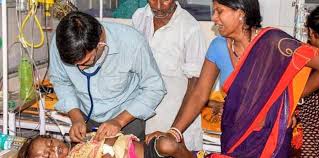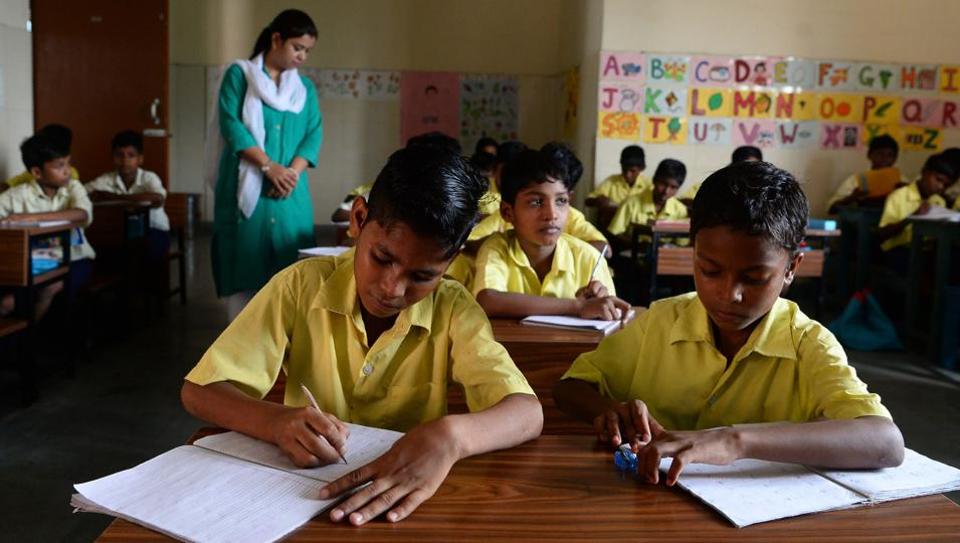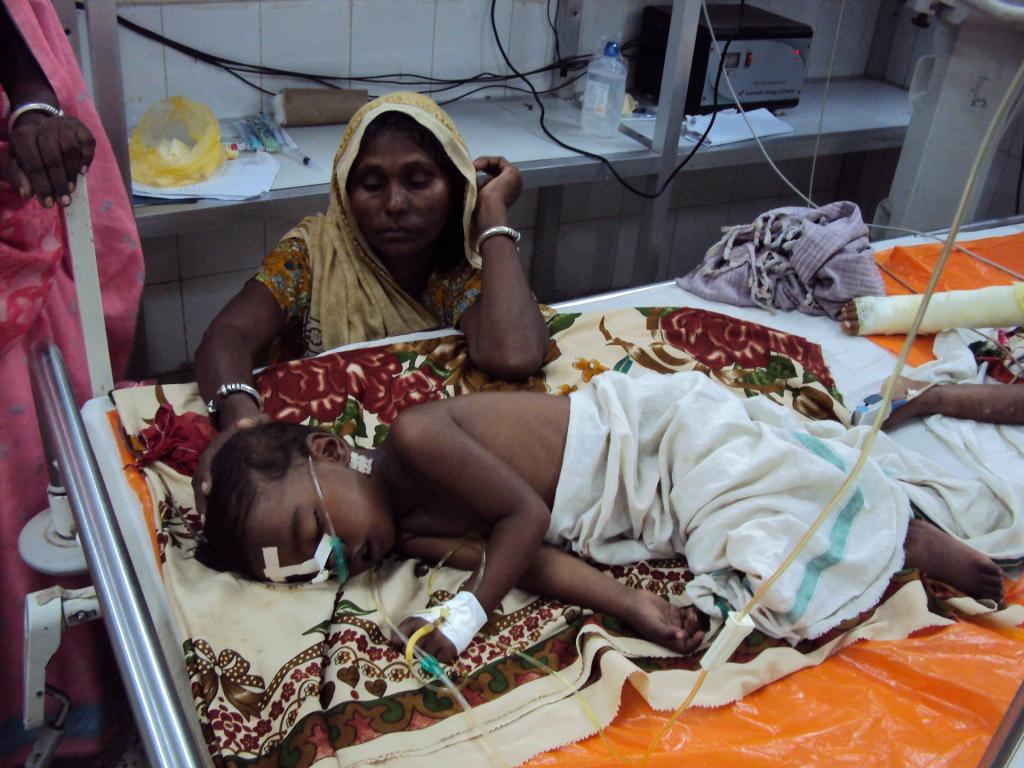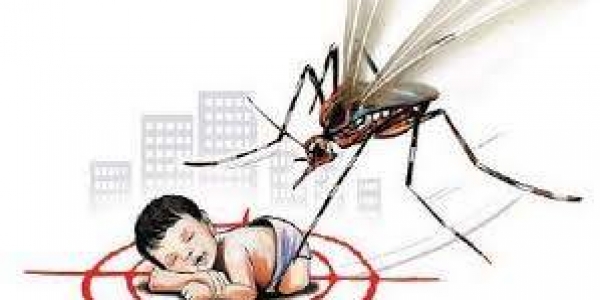Source: newsclick.in
Patna: In the last nine days, several children have died in North Bihar of suspected Acute Encephalitis Syndrome (AES). On Monday alone, about 20 children reportedly died, while three deaths were reported early Tuesday in Muzaffarpur town hospitals. As per reports, five five children died in two villages — Harvanshpur Paschim and Khirkhaua under Bhagwanpur police station in Vaishali district — in last the 24 hours due to symptoms similar to AES after being admitted to hospital.
As helpless parents look on, dozens of children are still battling for their lives with symptoms similar to AES and are undergoing treatment at two hospitals in Muzaffarpur. So far, the disease has already claimed the lives of 53 children, but the state government is playing these deaths down by claiming that these were due to hypoglycaemia.
In Muzaffarpur, the state government-owned Sri Krishna Medical College and Hospital (SKMCH) and private Kejriwal Hospital, where most of deaths took, have names and address of the victims. But state government, particularly the health department, is not prepared to accept this reality.
Meanwhile, Bihar Health Minister Mangal Pandey has denied that these deaths were due to AES. Pandey, a senior Bharatiya Janata Party (BJP) leader, said that only 11 children had died since June 2 and most of the deaths were due to hypoglycaemia, adding that only one child died due to Japanese encephalitis. “There is a situation of misconception in connection with deaths of children in Muzaffarpur. We have got information of deaths due to hypoglycaemia, except one death due to JE,” he was reported as saying.
AES cases have surfaced in Bihar in such a large number after a gap of three years. Last year, a total 40 cases of AES were reported in which seven deaths occurred.
But this year, the situation is alarming, said sources. This can be gauged from the fact that the two paediatric intensive care units at SKMCH are full and the hospital authorities were forced to open a third PICU to accommodate fresh cases. Ironically, with heavy rush of seriously ill children on Monday, there were no bed available to admit new suspected AES cases in the PICU the hospital and officials had to get the general ICU vacated by shifting patients to other wards.
“We have been admitting seriously ill children in PICU and the general ICU to provide treatment in view of the situation and regular arrival of new patients” SKMCH’s chief medical officer, S P Singh, said.
SKMCH superintendent Sunil Kumar Shahi said “It took us by surprise. We hardly expected such a bounce back this year”.
Helpless parents, after failing to get their seriously ill children admitted in SKMCH, are left with no option but to rush to privately run Kejriwal Hospital in Muzaffarpur.
Most of the children with suspected AES belonging to the rural poor section (dalit, other backward classes and extremely backward classes) of the population in Muzaffarpur and the neighbouring districts of Vaishali, Sitamarhi, Samastipur, Sheohar, East and West Champaran.
Locally known as Chamki Bukhar or Mastishk Bukhar, AES is widely seen as a deadly disease for children in flood-prone North Bihar districts. While the cause of deaths of children may be AES or any other, Sanjay Kumar, the principal secretary in the health department, reiterated that the deaths this year had occurred due to hypoglycaemia, resulting from high heat and humidity.
Kumar explained that when children play in the open under the scorching sun, it leads to dehydration and affects their intake of food and water, leading to hypoglycaemia.
According to him, Bihar had reported 34 cases of hypoglycaemia, resulting in 10 deaths till date this year, while one death was due to dyselectrolytemia (electrolyte imbalance).
However, with increasing cases of suspected AES, the state government has introduced a verbal autopsy form to fix responsibility for any lapses in treatment and referral. “We have a standard operating procedure for treatment of AES”, he added.
The health department has also issued an advisory urging parents to prevent their children from playing in the open under the sun at a time when the temperature was hovering between 42 to 43 degrees Celsius.
Interestingly, contrary to the denial of children deaths due to AES by a top health department officer, chief minister Nitish Kumar on Monday at a press conference, in reply to question on child deaths due to AES in Muzaffarpur, said the health department had been keeping a close watch on the situation. “Ahead of the rains (monsoon) ,every year this disease (yeh bimari) creates havoc. It is a matter of concern that every year children are dying due to it”, he said.
The chief minister said the health department had taken steps to contain the disease and was sensitising the people about measures to prevent it.
According to doctors, AES is a severe stage of encephalitis characterised by inflammation of the brain. The disease is transmitted through mosquito bites, leading to infection that causes high fever.
“Every year, encephalitis hits Muzaffarpur, Gaya and other neighbouring districts in May or June. But this year it seems to have affected a large number of children,” a health department official said.
